When you think of a white picket fence, you’ll probably imagine the suburbs and domesticity. These fences aren’t just decorative or symbolic; they are also practical. A picket fence can create an enclosure in your front yard for privacy and security. They also add to the beauty of your house and garden. You can choose from many picket fences to improve your landscape’s visual appeal and character.
Image credits: Nicolas Gonzalez
The word picket comes from the French word ‘piquet,’ which refers to a pointed stick or board. Over time, the white picket fence’s meaning became a symbol of 20th-century success, and its symbolism continued to evolve. Beautiful white picket fences have been a nostalgic and popular part of the culture. Over time, these traditional white garden fences have incorporated many modern elements, such as arbors or paddles.
What Does a White Picket Fence Symbolize?
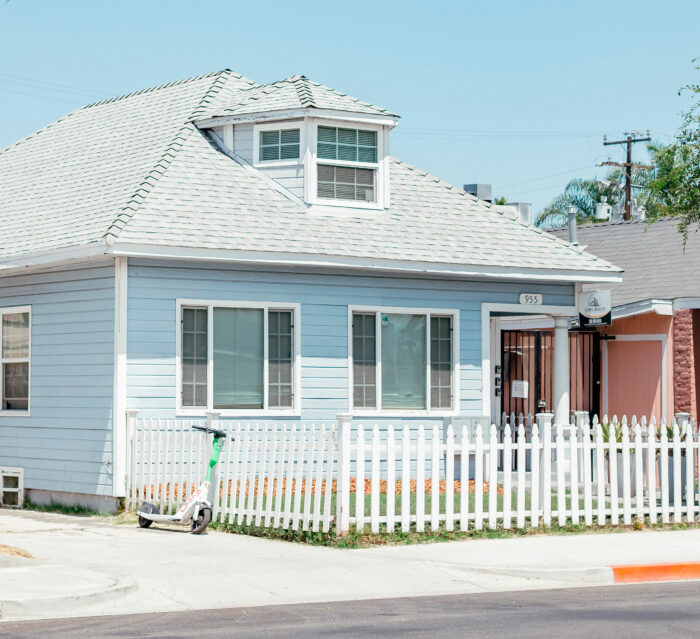
Image credits: Alex Ramon
Traditionally, a white picket fence house symbolized the American dream to buy a home and have success and wealth. This idea emerged during colonial times and was used to depict a middle-class suburban family with children, a comfortable home, and a good life. That’s why many people still aspire to have a house with a white picket fence.
Why Are White Picket Fences So Popular?
These traditional white fences were initially used for security. But now there are many other reasons why people love to install them. Here are some benefits of setting up a white picket fence in your yard.
Security
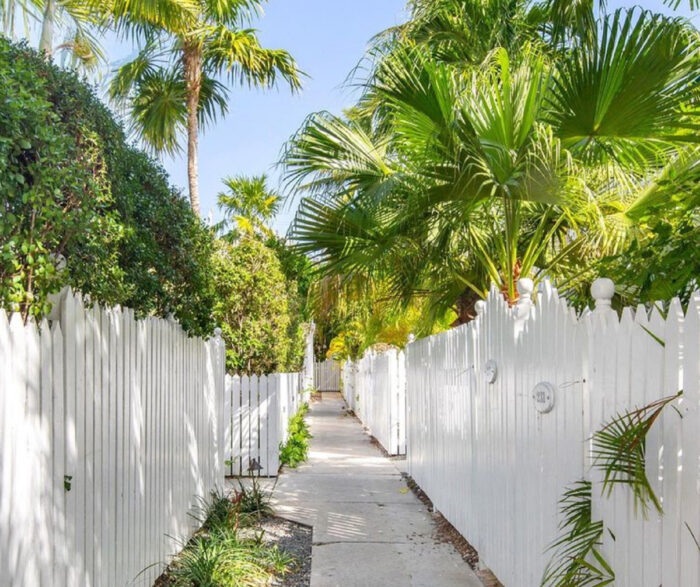
Image credits: Ellen Phillips
Metal and wooden picket fences are sturdy and durable. These installations can help keep burglars out, protect your pet or child from danger, help you avoid pesky neighbors, and define the boundaries of your home.
Aesthetics
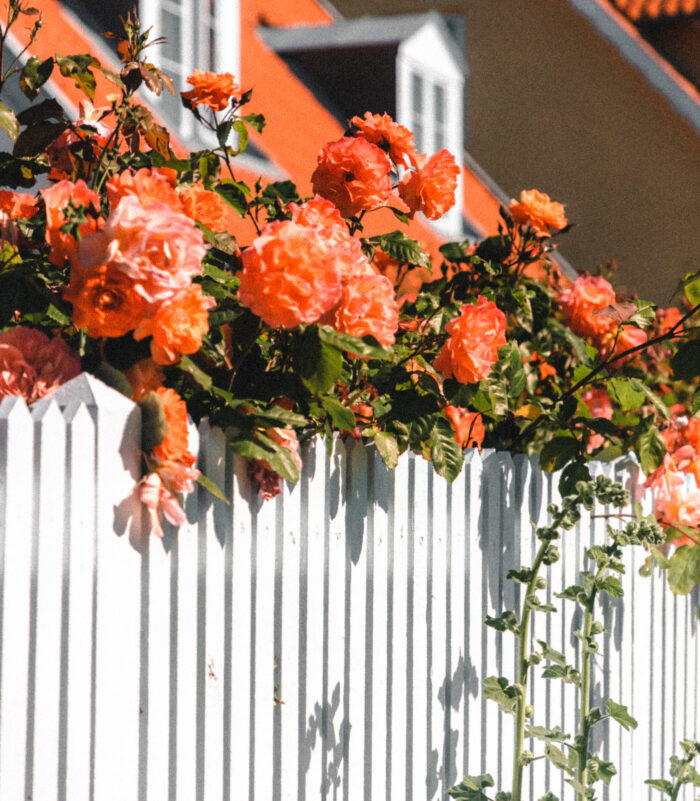
Image credits: Jakob Søby
These fences are a strong decor statement. The panels’ symmetry and the color’s elegance will make your garden and home look great. White fence panels are a great choice because they draw attention to the beautiful flowers and plants you’ve grown. They can also help boost the marketability of your property.
Weather Protection
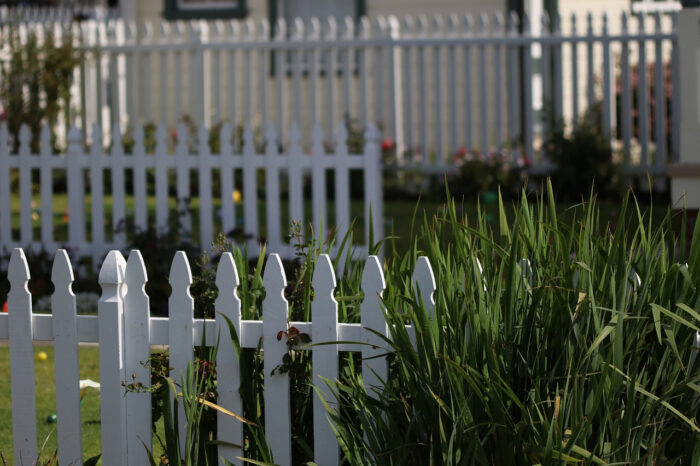
Image credits: VoxPedro
These durable picket fences can hold up well against unpredictable weather. They will protect your plants, trees, and home from strong winds, snow drifts, and water-logging.
Privacy
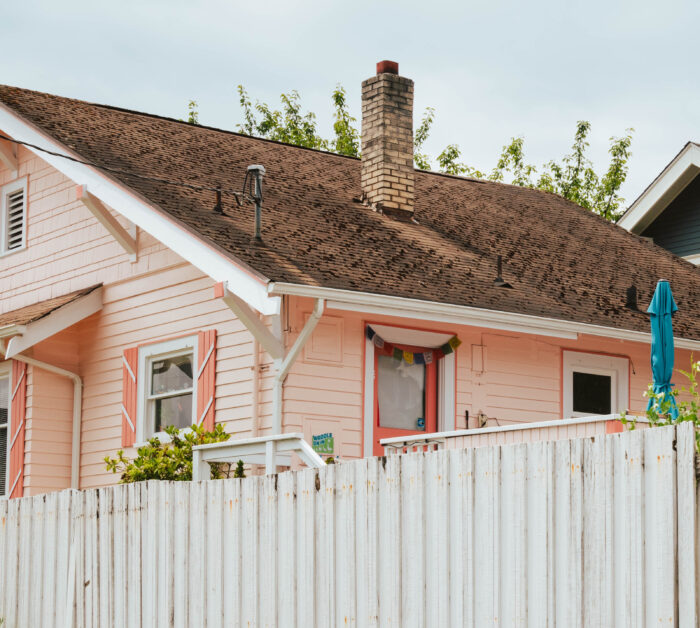
Image credits: Zane Lindsay
Even a small white picket fence can be an excellent barrier to save you from nosy neighbors. You can garden or lounge in peace without worrying about peeping toms. However, you can keep a tiny hole in the fence for a peeping dog to stick its nose through.
Nostalgia
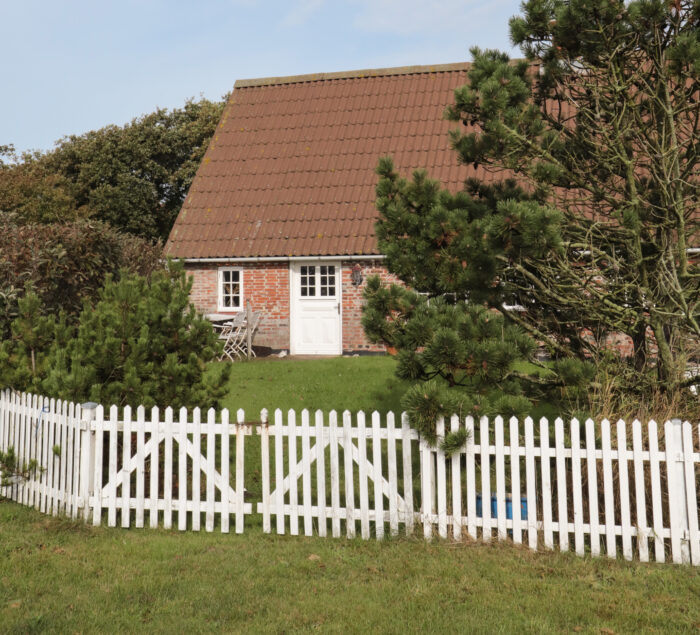
Image credits: Jantje
Besides functionality, white picket fences can help you create a classic and old-style look for your house. You can further enhance this retro look with a well-manicured lawn and a flower corner.
What Are the Disadvantages of White Picket Fences?
Once you assemble the picket fence, it can be challenging to deal with some of the fence parts or the responsibilities of its installation. Here are some common difficulties with having a white picket fence.
It Needs Regular Maintenance
The fence wood, white vinyl, metal, or other materials can get damaged over time by rain, snow, and heat. They will also experience steady wear and tear over time. It’s essential to look after your picket fence by washing or scrubbing it to keep it fresh. White vinyl fence panels are easier to maintain and only need occasional maintenance. Wooden picket fences are susceptible to rot, so it’s better to stain the wood.
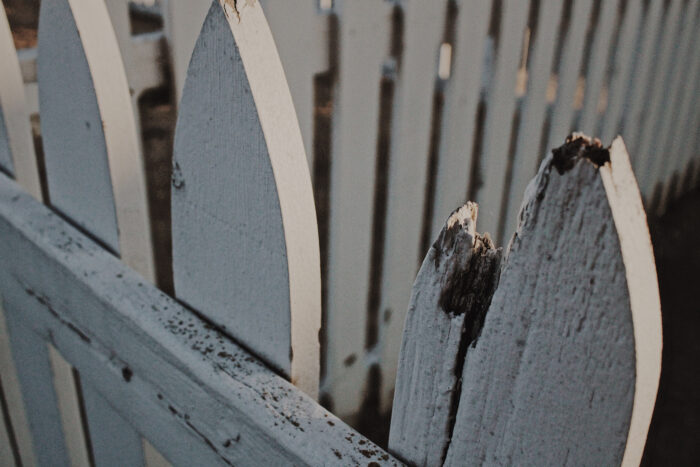
Image credits: Ava Tyler
It May Not Work for Small Pets
Spaced-out picket fence panels won’t be able to keep tiny pets or toddlers inside the yard. For safety purposes, install white picket fence panels that are closely spaced, and make sure to get a gate. If you’re looking for a unique option, consider this fancy fence gate that disappears into the ground.
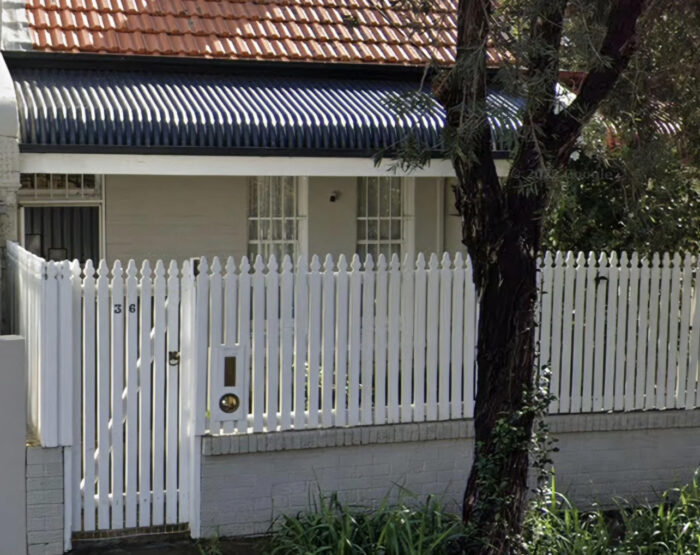
Image credits: __erin_
It Needs to Be Cleaned Regularly
This color is the most susceptible to dust when opting for a white fence for your yard. You must use a power washer, a brush, and soapy water to clean the fence and keep it looking fresh.
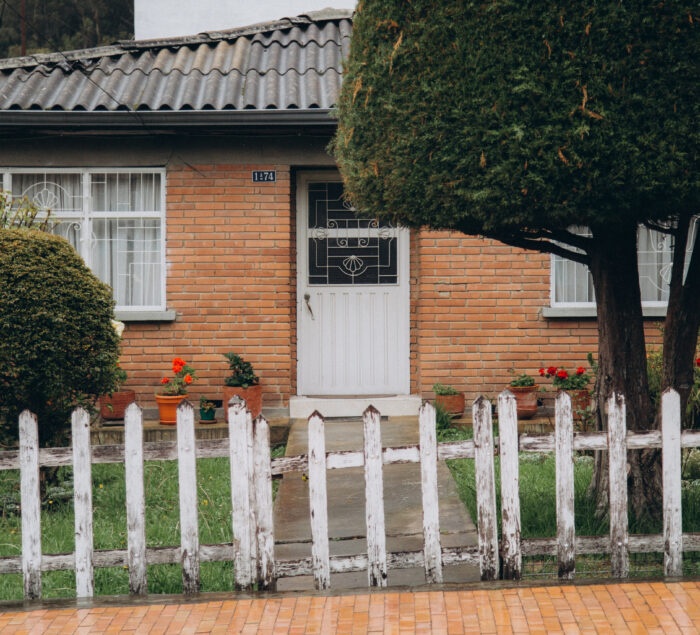
Image credits: Yura Forrat
What Materials Are White Picket Fence Panels Made Of?
There is a wide range of materials that you can choose when setting up a white fence in your garden. Pick an option that you find easiest to care for.
Wooden Picket Fence
Wooden fences are easy to install, customizable, and inexpensive compared to other options. This traditional option is durable and can withstand pressure and harsh weather conditions. There are five types of wooden white picket fences:
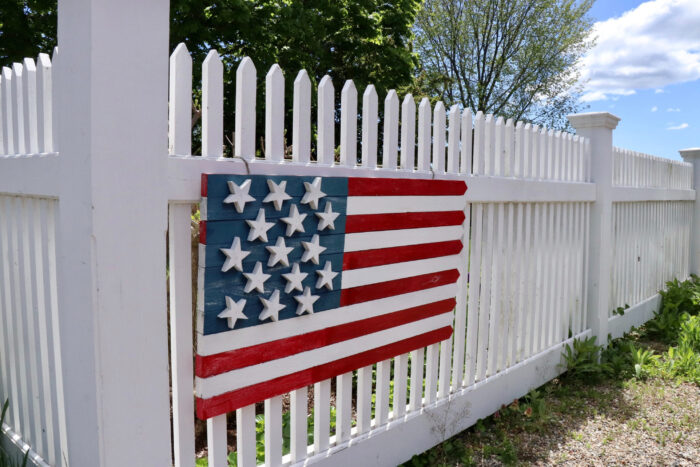
Image credits: Beth Desrosiers
- Cedar: This type of wood can last for 15–30 years. Cedar is an inexpensive option, but it needs frequent cleaning and maintenance. This wood lends itself to creativity, and people have carved it into extraordinary things, like this person who cut a cedar tree into a mermaid.
- Redwood: This durable type of wood is best for warm and humid climates. It is also pest-resistant. However, it might be more expensive than the other wood options, costing $4–7 per linear foot.
- Spruce: These panels can stand firm for 4–7 years. This type of wood is light and soft. It has good strength and elasticity, which is excellent for picket fence panels.
- Pine: This wood can last from 5–12 years. Pine is a lightweight type of wood that is also durable and elastic.
- Cypress: It produces a natural insect repellent called cypretine. Cypress has a naturally pleasant smell and works best against wood rot.
White Vinyl Picket Fence
A vinyl fence is a common choice for most people. The vinyl picket fence panels have a glossy finish and can imitate the look of painted wood. This material can last 15–30 years, so it is a popular option.
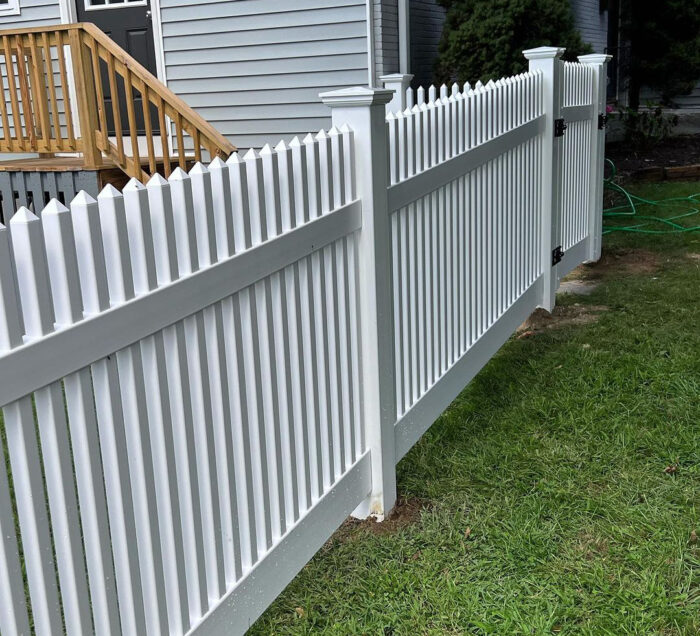
Image credits: buenofenceinc
A white vinyl picket fence is a good investment for humid climates because insects, moisture, or rot don’t affect it. The average cost for this material is $17–38 per linear foot.
Metal Picket Fence Panels
These are the most durable picket fences. They are easy to install and can withstand the test of time. They are also the most expensive option but a good investment in the long run. Here are the most common metal fences:
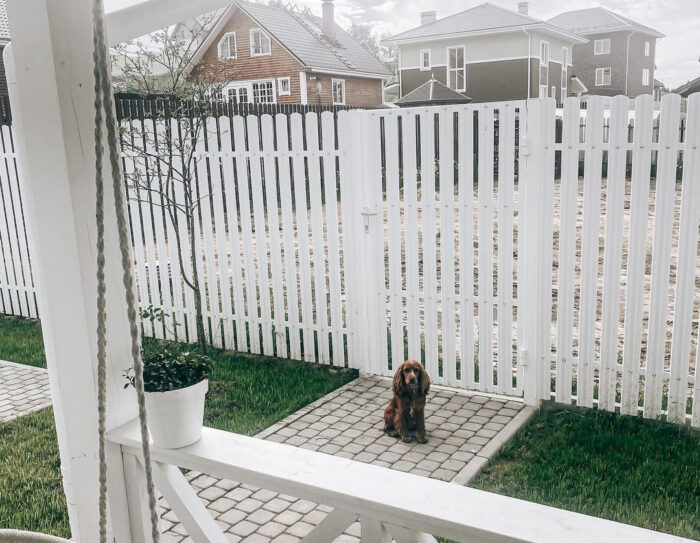
Image credits: y.linevich
- Wrought iron: This type of metal fence is susceptible to rust if the paint finish gets scratched. It is a heavy-duty metal and the most expensive.
- Aluminum: Powder-coated aluminum is hardy and won’t need much touch-up over time. It is the most rust-resistant metal but also the weakest. The average cost will be $24–32 per linear foot.
- Steel: This is the most commonly used metal because it is easy to care for and can last long. Galvanized steel is rust-resistant. A steel white picket fence costs around $23–45 per foot.
Composite Fence Parts
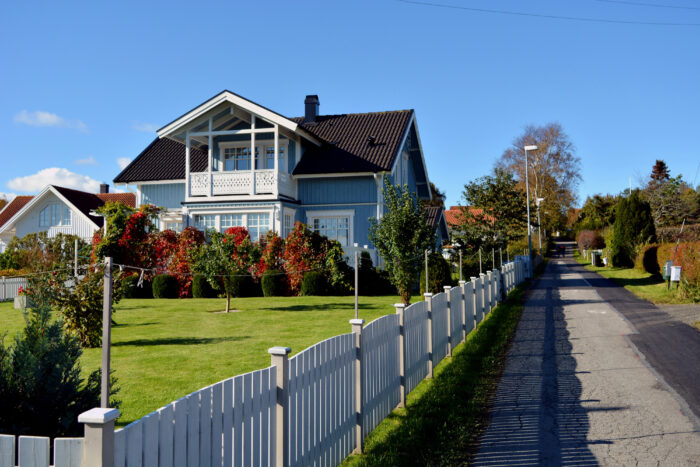
Image credits: Suchandra Roy Chowdhury
This low-maintenance fencing option lends itself to easy installation. It is made by combining wood fibers with plastic polymers. Composite white picket fences have a wood look and texture. They are also environmentally friendly and long-lasting. They are less expensive than metal but not as cheap as wood picket fence panels. Composite panels can cost up to $11–46 per linear foot.
White PVC Fence
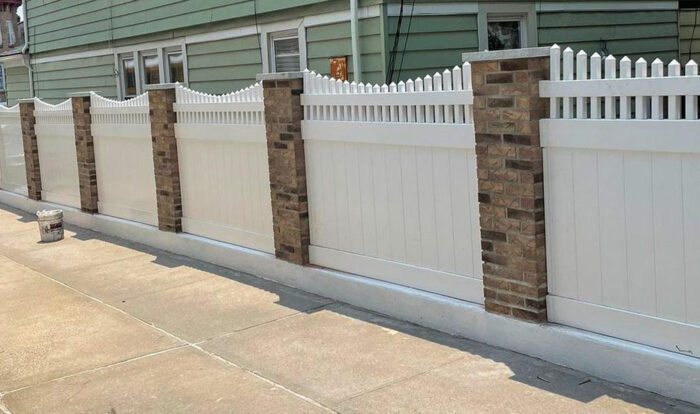
Image credits: energyfencing
PVC is made from polyvinyl chloride, which makes it rot-resistant and weather-resistant. It is an excellent alternative to metal and wooden fencing because these decorative panels don’t deform over time. This white plastic fence is a perfect no-dig option because you can install it on any soil with minimal effort.
What Are the Buying and Installation Options for Picket Fences?
A fun way to install white picket fences is to DIY. You can find suitable fence kits and materials at lumberyards or centers like Home Depot. There are two options that you can pick for DIY:
Prefabricated
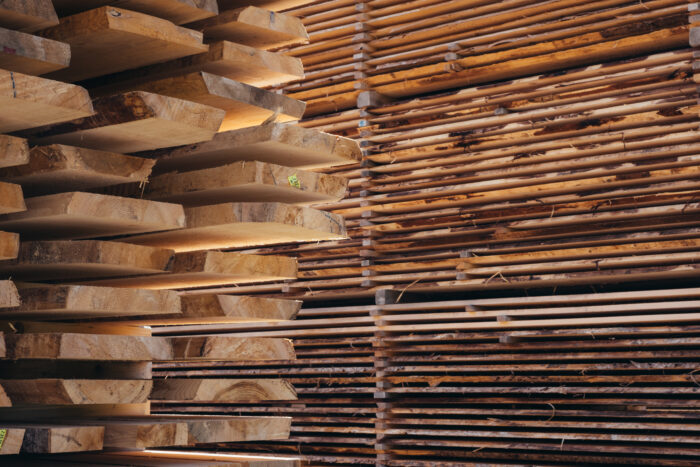
Image credits: Patrick Robert Doyle
Home centers stock fence panel kits made from prefabricated wood, powder-coated metal, and composite materials. The wood panels are typically 3–4 feet wide and 8 feet long. The metal panels might be around 6 feet long. Whereas the composite panels will be 6 feet long and narrower. You only have to set the posts into the ground and fasten them.
Ready to Assemble
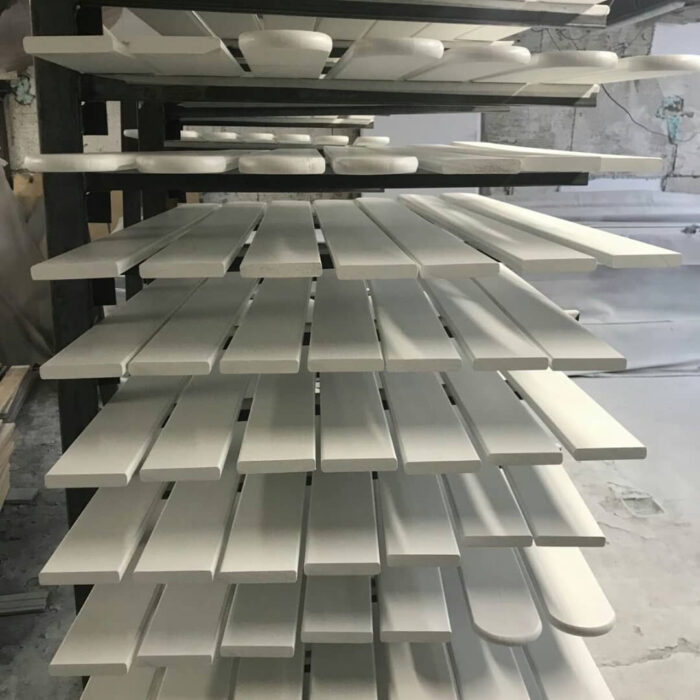
Image credits: lesobaza_color
Many centers provide vinyl and metal ready-to-assemble fence panels. They provide pickets and posts in cartons. A rail connects to joints in the posts, allowing the pickets to sit in place. There are minimal brackets and screws necessary to assemble these fences.
Apart from DIY, you can hire a professional to install your white picket fence. This option will likely cost more than buying the materials and setting the fence yourself. However, it allows you to pick from many configurations and fence styles.
Heavy-duty and tall picket fences can help you make your home a safe haven. However, some people take this to an extreme level, like this neighbor who installed a fence with a camera to spy on other people. Promise us that you will use your picket fence for good! Pick from these exciting styles and designs to give your yard an edge.
16 White Picket Fence Designs to Transform Your Yard
Choose a picket fence that can tie together the look of your house and yard. All of these options can be constructed with the materials given above.
Rounded Arch Fence
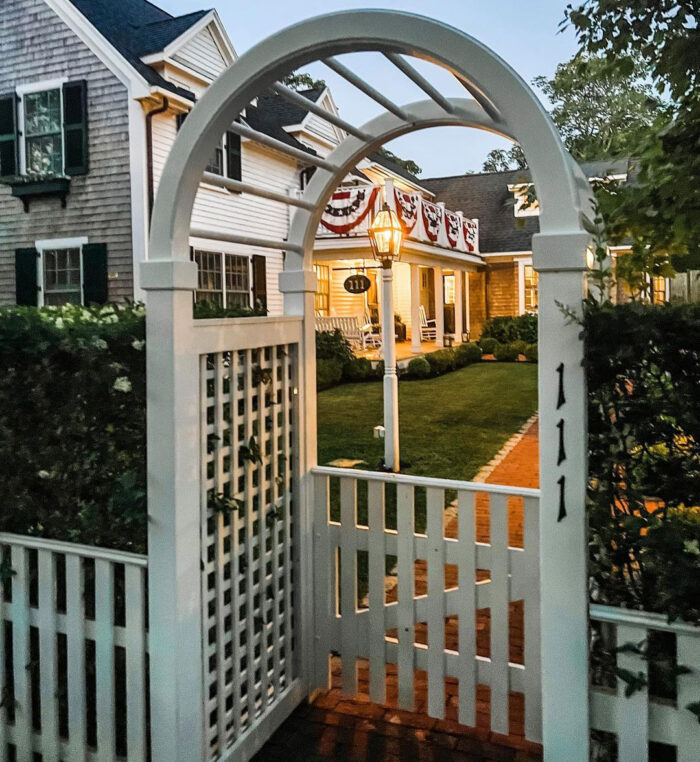
Image credits: summeronmv
This type of white picket fence will match the contours and curves of your landscape. It creates an aesthetically appealing effect and can make the pathway to your house look grand. The rounded arch can be made even more beautiful by growing vines that can twirl around it as a support. Arches are famous for their elegant look, and many like creating them from materials like this arch made from recycled books.
Decorative Wave Fence
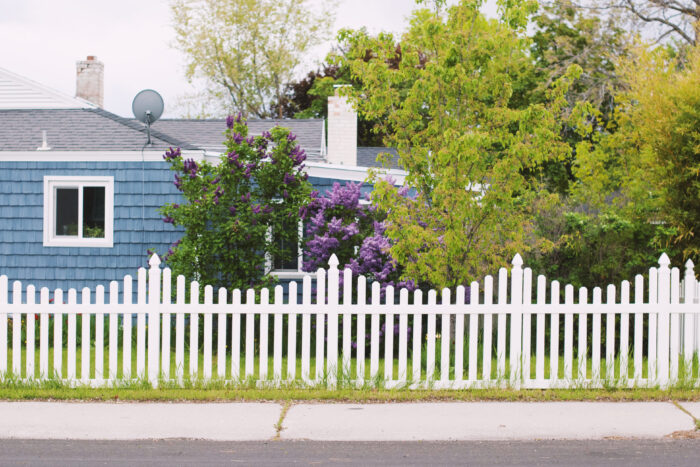
Image credits: Aubrey Odom
The wavy white picket fence differs from traditional options because it has a more ornamental effect. It looks much more fun and playful than the straight picket fence options. You can get this effect by making a wave-like shape on the vertical edges of each slat. Then, you have to mount them onto horizontal rails.
Spaced-out Picket Fence Panels
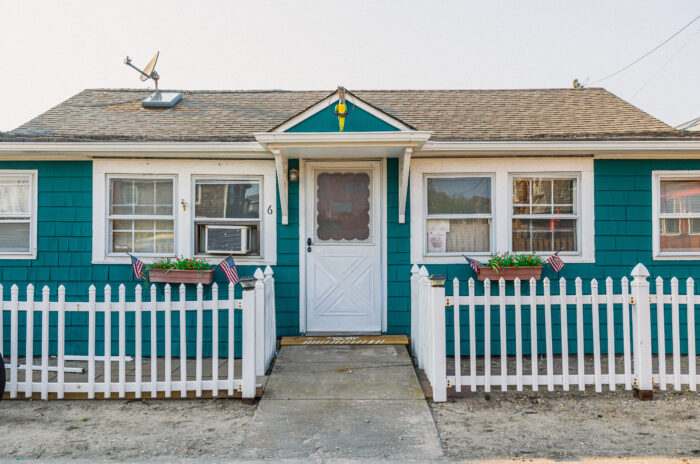
Image credits: Adrian Hernandez
This is a good option for people who don’t have small pets or children. The spaced picket fence slats help to draw attention to your yard landscaping. You can plant beautiful flowers or gorgeous shrubbery in your garden to contrast with the clear white picket fence. It will also make people appreciate the look and decor outside your home. You can use these home exterior designs to make your house look incredible.
Closely Spaced Privacy Fence Panels
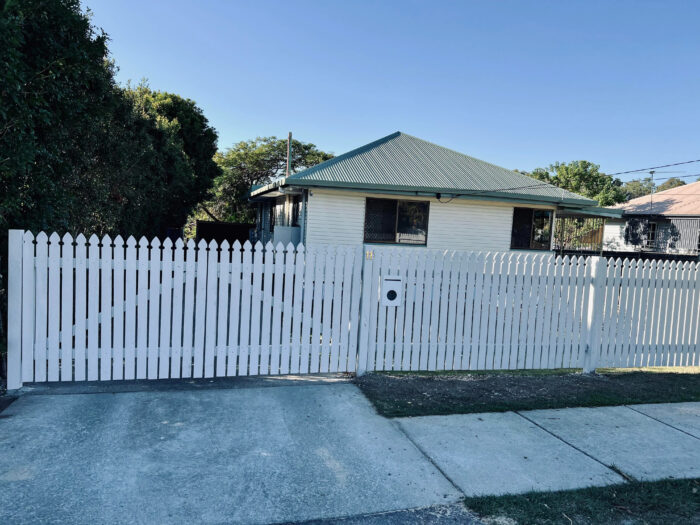
Image credits: SumEdv2
This picket fence will help keep your backyard and home safe from people’s prying eyes and protect your pets and children from wandering off. The closely constructed panels will stay strong against heavy rains, storms, and snow drifts.
Tall Privacy Picket Fence
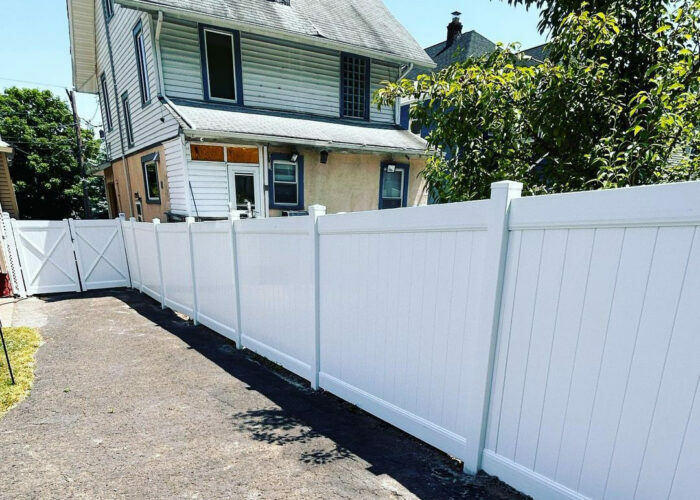
Image credits: mega__fencing
If you are looking for extra privacy and security for your home, installing a tall picket fence is better. This option is the safest to keep burglars away and keep your house secure. Regarding pricing, this might be a costlier option because you will require more prominent pieces of wood, vinyl, metal, composite, or PVC.
Cut-Out Pattern Ornamental Fence
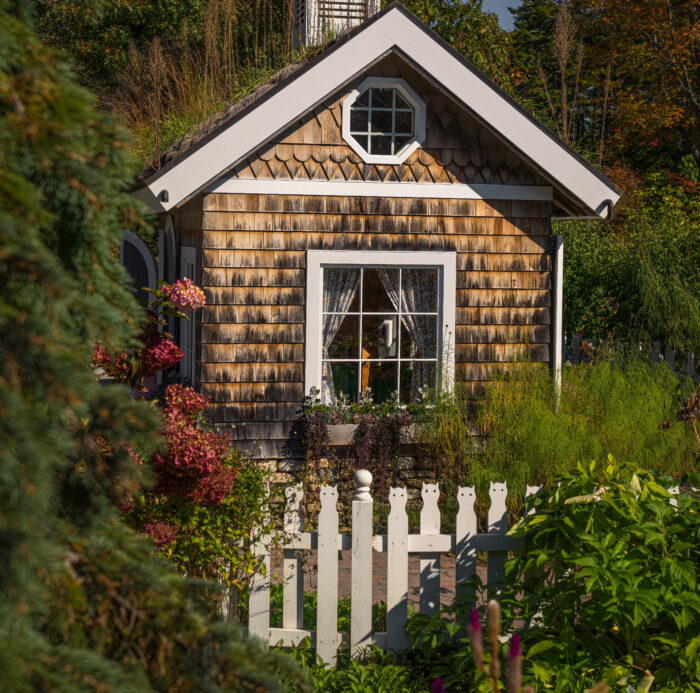
Image credits: Skyler Ewing
Fancy cut-outs in the fence panels can add to the decoration of your yard and house. They add a sense of whimsy and fun to the fence design. You can combine multiple patterns or go for something simple like square, circle, or diamond pattern shapes in the panels. Who knows, maybe these fence holes will provide the perfect way for your pets to say hi to passersby on the other side of the fence!
Rounded Panel Edges
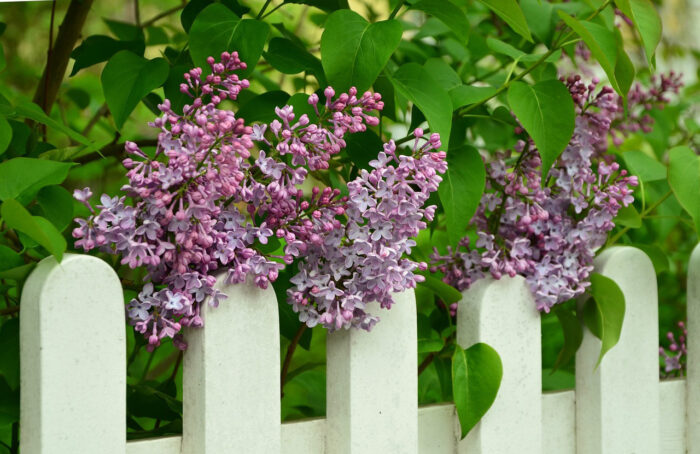
Image credits: congerdesign
This design style is a good option for homes with children so they don’t get hurt or poked by the picket fence edges. This picket fence makes a cute addition to a garden or backyard. When there are rounded edges at the top, it is called a paddle picket fence.
Curved Pathway Fence
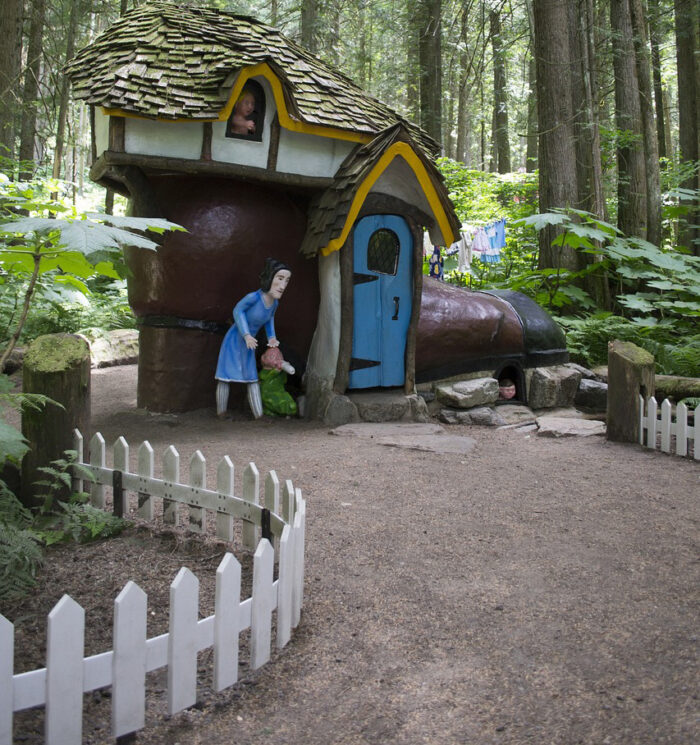
Image credits: Cheerfully_lost
A curved white picket fence is the perfect option to frame your front yard. It can create a welcoming atmosphere while also being eye-catching. Some fences can be curved to mimic the natural landscape of the garden or to surround the flower beds. The fence curves can enhance the home’s curb appeal and give it a defined look.
Picket Fence Framing the Yard Landscaping
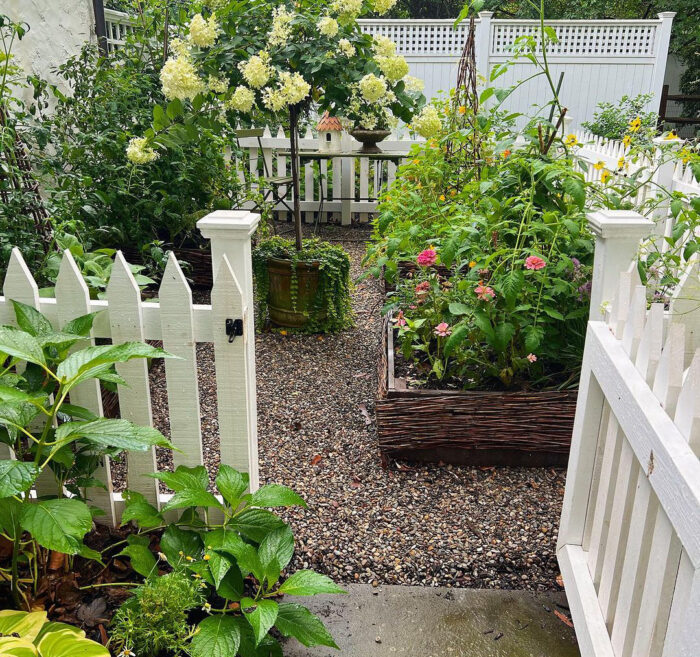
Image credits: stonecottage2250
Install your picket fence near the yard’s shrubbery or vegetable garden. This can be done to provide added support to the plants. It can also provide a contrast between the green hues of the plants and the clear white of the fence. A framed garden will make your home look beautiful and fresh. You can also create a unique garden design to stand out even more.
Flower Framing Picket Fence
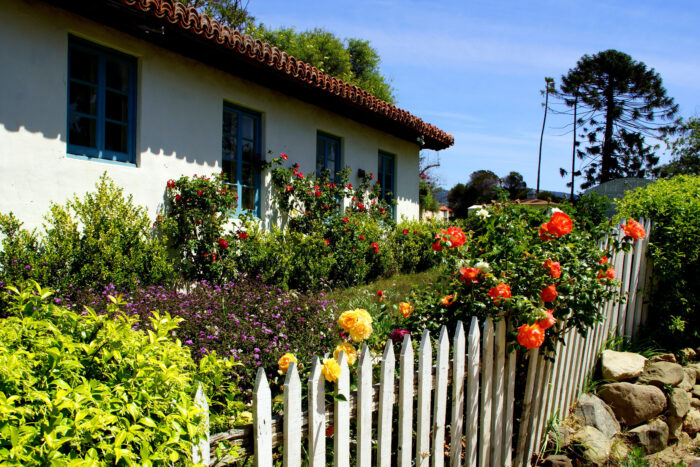
Image credits: rod m
An excellent way to bring color to the white picket fence is to plant beautiful blooms on either side. You can trail some ivy or plant other creepers so that they twirl around the fence panels. Make sure that the flowers have enough place to grow. Wood fences are more susceptible to rot, so be careful when watering your plants.
Short Picket Fence for Decoration
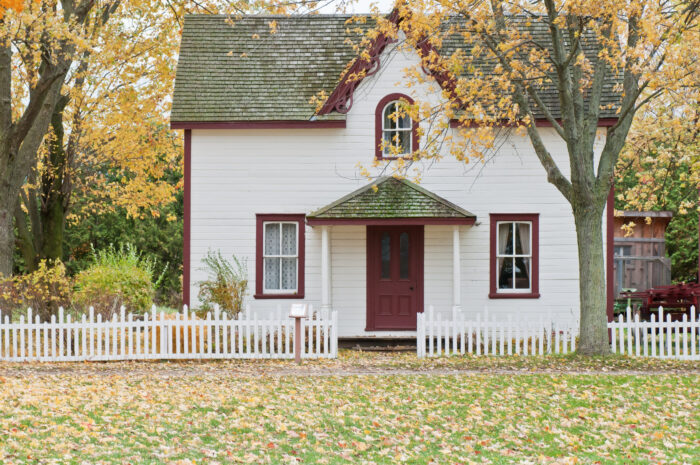
Image credits: Scott Webb
Tall picket fences are usually installed for privacy and security reasons. Short picket fences, however, are installed to add to the decor of the house. These fence panels don’t have much functionality because they can’t protect the yard. But hey, they do look adorable!
Mixed Panel Kit
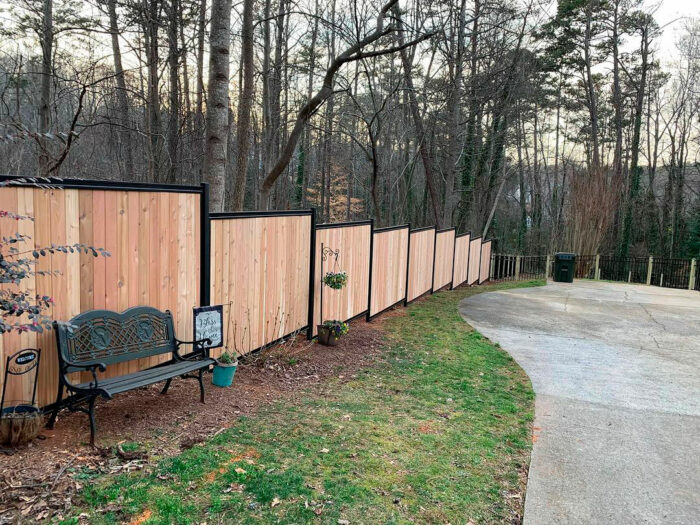
Image credits: perimtec
This is a modern picket fence design that combines the functionality of different fence panel materials. You can create a sturdy picket fence with wooden slats and metal posts. This might be more expensive, but it will be the most durable picket fence for any yard.
Mixed Colors DIY Picket Fence
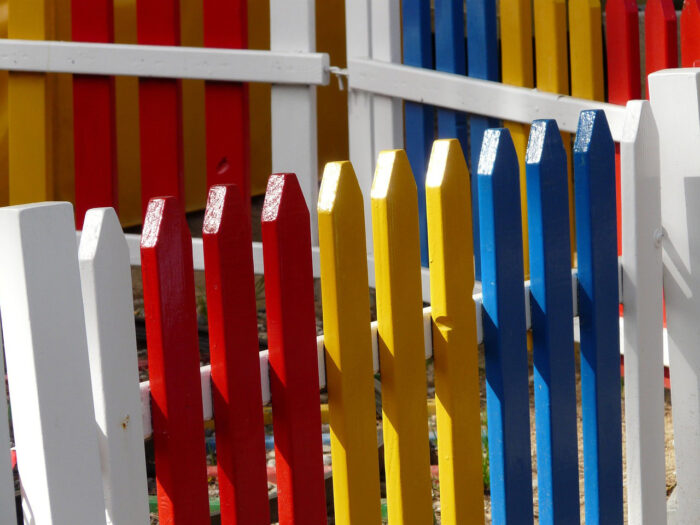
Image credits: Hans
Let your personality shine through with your white picket fence ideas. You can combine the traditional white panels with other colors. A subtle color like black will make the picket fence look elegant. Bright colors like pink, green, blue, and yellow will add vibrance and life to the backyard. You can paint lovely flowers on the fence if you are in the mood for DIY crafts.
Minimalist Lightweight Picket Fence
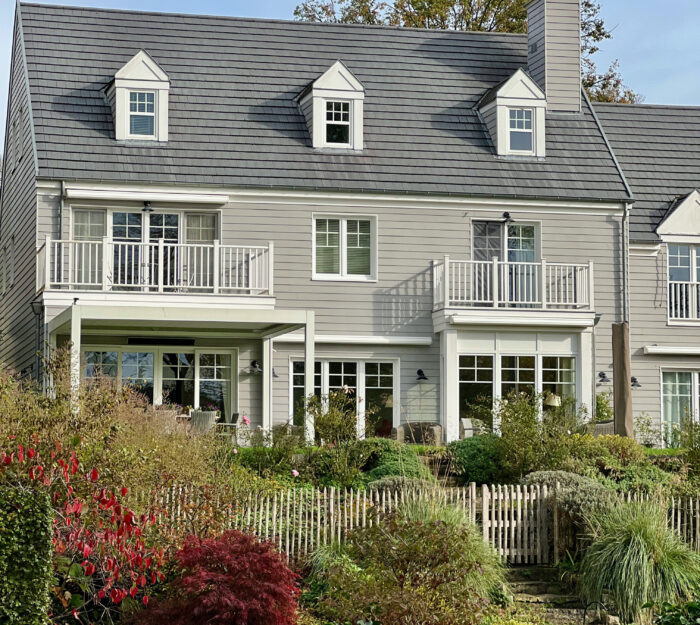
Image credits: Philippe WEICKMANN
If you like the minimalist look, you can build a white picket fence that is classy, elegant, and lightweight. Vinyl and PVC are good options for smaller and compact picket fences. They will also provide the garden with a more modern and polished look and require less maintenance.
White Picket Fence Enclosure
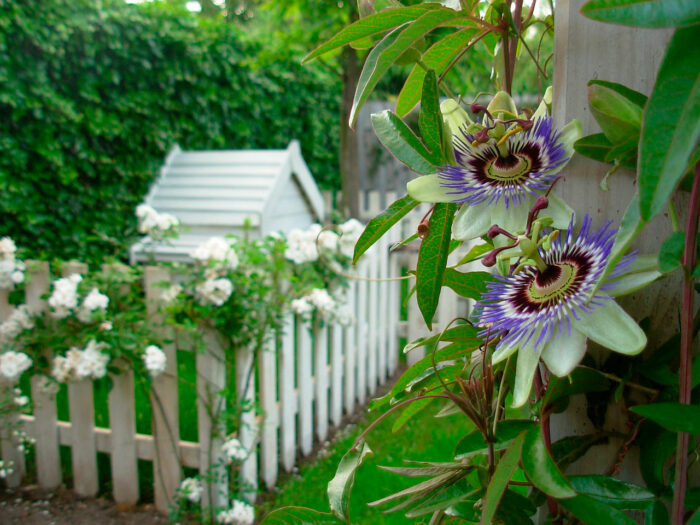
Image credits: Ben_Kerckx
White picket fences were initially used to enclose the entire yard. However, you can also use them to create an enclosure for plants, shrubs, vegetable gardens, or pets. These fences will create a box effect that will help protect the vegetation or animals from harsh winds and other weather conditions. They are also easier to install and cheaper.
White Picket Fence With Gate
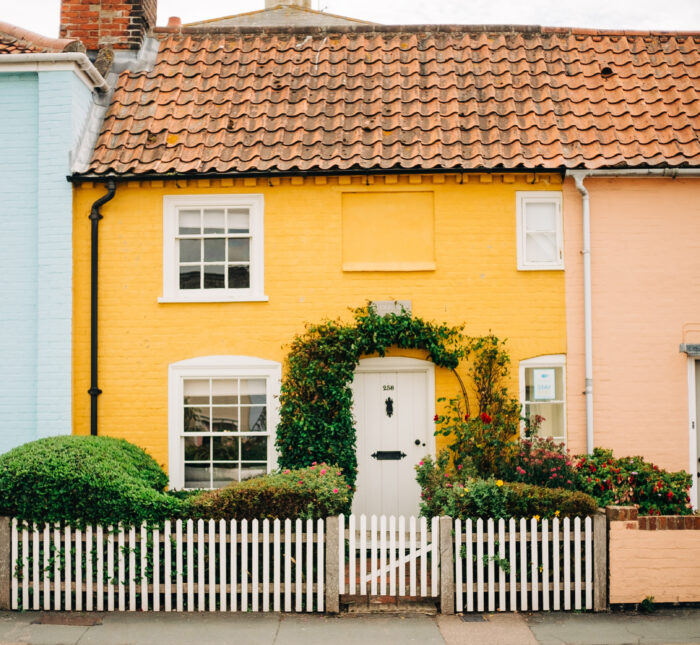
Image credits: Peter Mason
Picket fences are already beautiful, but a gate can make them seem even more welcoming. You can install the gate to open up to your driveway or the pathway leading to your front door. This tiny addition can create a homely atmosphere for visitors and make your home seem quaint.
Is a White Picket Fence a Good Idea?
A white picket fence has traditionally been a symbol of success and elegance. Although it doesn’t have quite the same meaning now, it is still an excellent addition to the yard. It can provide security, privacy, and protection. You can even use the white color as a base to make creative designs and take your backyard fence to the next level!
FAQ
What’s the Best Material for a White Fence Panel?
Although wood was traditionally hailed as the best picket fence material, artificial options can last longer and are less prone to rot, rust, or damage. Outdoor vinyl fences and PVC pickets are an excellent option.
Which Is the Best Heavy Duty White Picket Fence to Install?
Metal is the most durable material for a picket privacy fence. It is also the most expensive option. For a cheaper, lightweight white fence panel alternative, go for vinyl. It is resistant to rotting, water, mildew, and mold. It looks and feels exactly like wood.
What Were the Traditional Uses of White Picket Fences?
Picket fences were used during colonial times to mark property and protect one’s home. Affluent colonists often painted their picket fence panels with creamy-white paint or whitewash—a mixture of lime and water. The fence often matched the home’s color, which was usually white during the Greek Revival period.
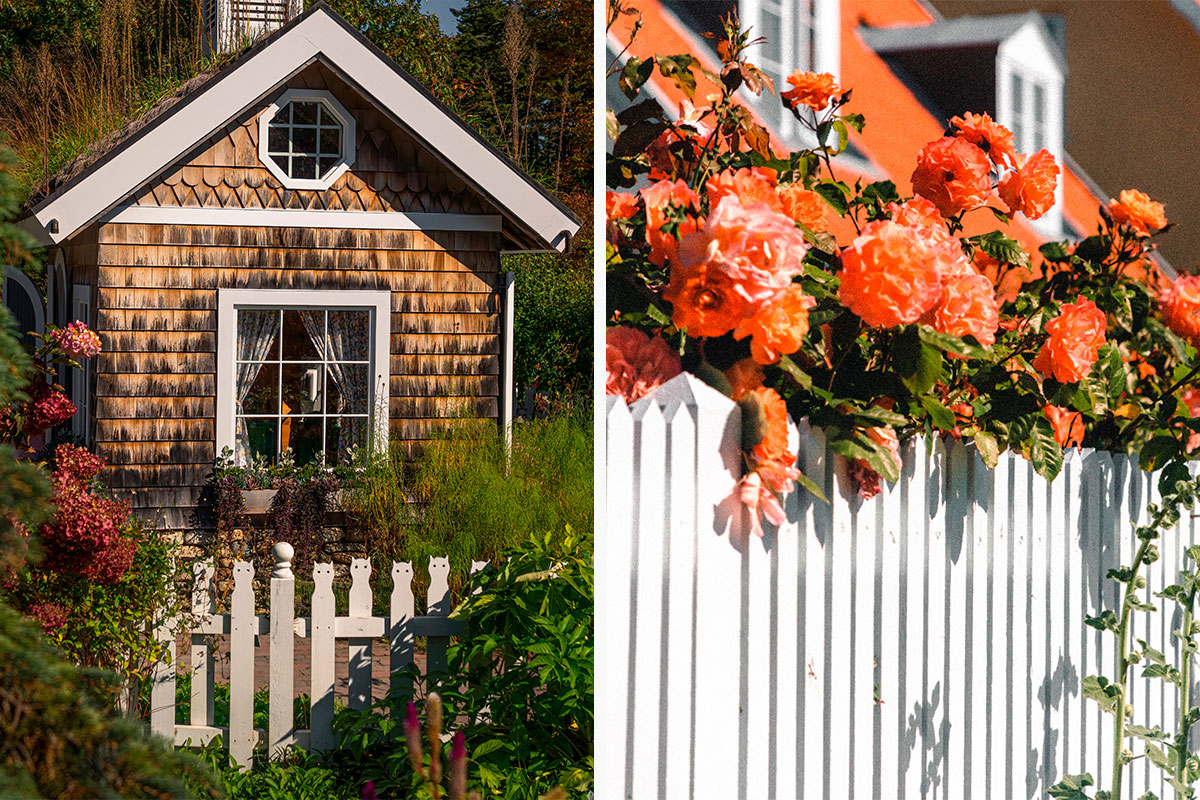
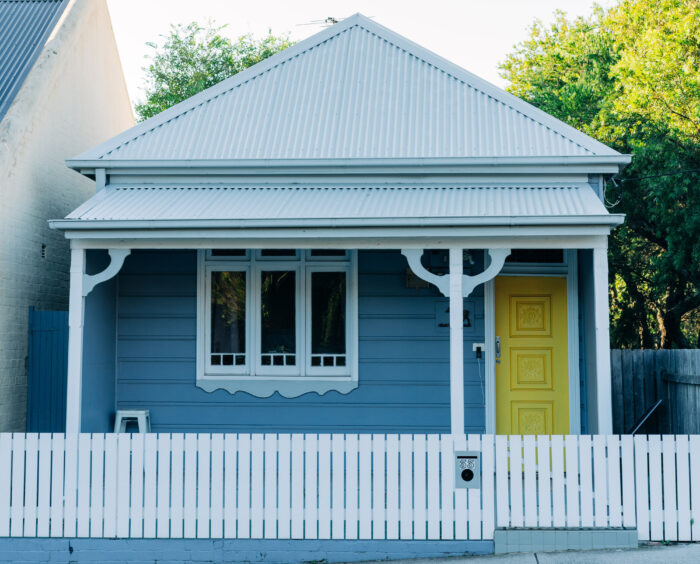














7
1